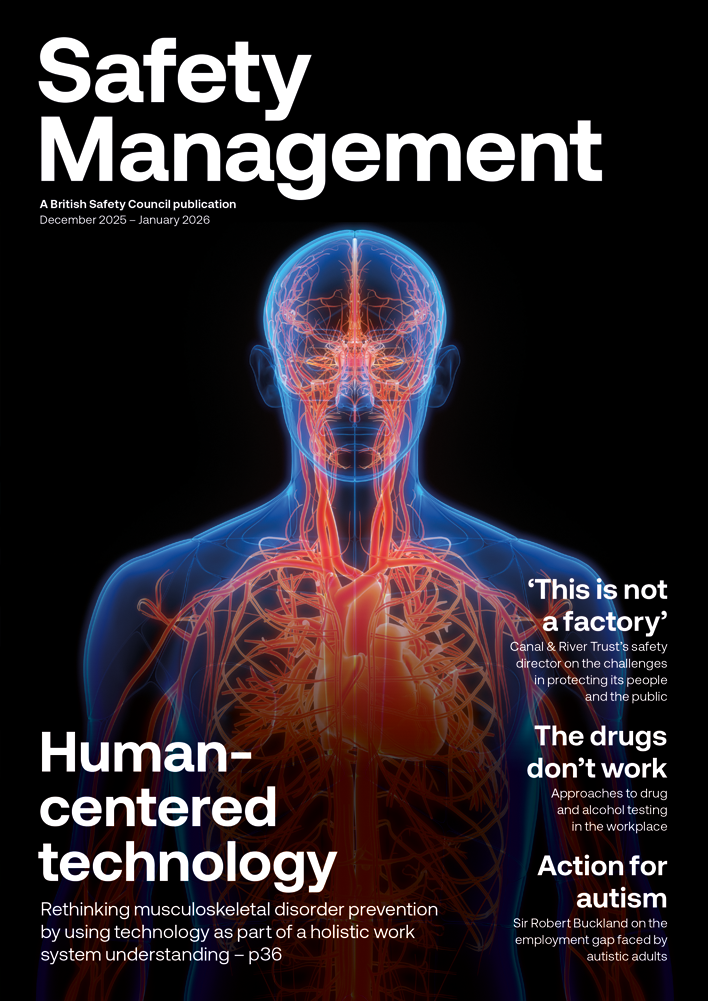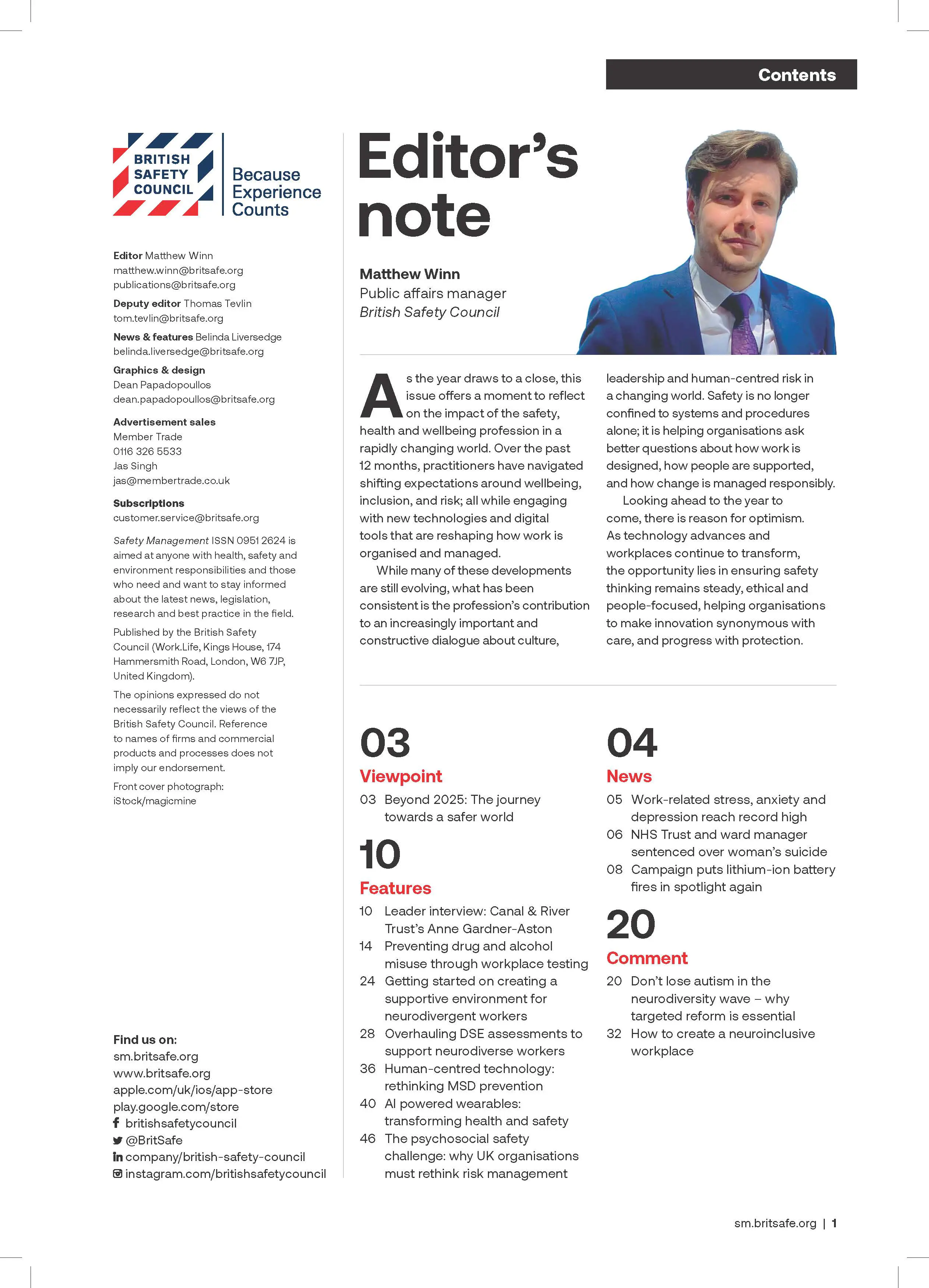Unmanned drones could avoid the risk to life posed by using helicopters to carry out maintenance inspections of offshore wind farms. But much larger and more powerful models will need to be developed and approved for use to cope with the strong winds.
Features
Flying away from risks
As the world wakes up to the significant benefits drones will bring to our lives, it is only natural that inventors, entrepreneurs and investors are now looking at every angle to exploit the technology’s potential.
Regrettably though, in a rapidly moving sector such as drone technology, there is still a lot of confusion about what a drone really is that has led many companies, organisations and the media to believe that a drone is simply a small spider-shaped thing that delivers a bottle of beer, an espresso or a pizza!
A drone is actually ‘any’ unmanned (meaning no pilot or driver on board) system that is remotely or autonomously controlled.

If you read that sentence a few times, you will notice that it does not mention air anywhere. For clarity, this is the official definition of a drone as published by the International Organization for Standardization, and it was created deliberately to encompass ‘all’ unmanned systems of ‘all’ shapes and sizes operating in any environment: surface (ground and maritime), underwater, air or space. It includes everything from humanoid robots, driverless cars, ships and submarines, aircraft, spacecraft and even the little devices which hoover your floor automatically while you are out.
Surely, applying the use of this incredibly versatile technology to applications that keep people safe and healthy would be a good place to start?
There are many applications which fit into this category, ranging from the use of drone technology by law enforcement to reduce the risk to police officers in high-risk environments; for offshore wind farm and underwater shipping inspections and maintenance to minimise the risk to human life; search and rescue; support to fire services; delivering humanitarian aid; and in support of our medical services. The list goes on, but, given the current climate, I think a good place to start is with medical and pharmaceutical logistics.
Health and medicine
This highly complex and large-scale application could undoubtedly benefit from the use of unmanned systems to improve the movement of medical supplies and biological materials, such as blood and pharmaceutical supplies. However, as is often the case, many are looking in the wrong place with the wrong tool.
The challenge of transporting time-critical medical supplies will never be solved by small drones flying a few kilogrammes of materials around. We need to look at the entire medical logistics infrastructure and create a strategic plan to implement drone technology designed to overcome key pinch points that cause delays in critical, life-saving supplies where delivery of such supplies is difficult.
Obvious examples of these are the delivery of short life-span compounds used in cancer treatments, the transportation of blood and the distribution of vaccines in the midst of a global pandemic! As the latter will never be implemented in time to assist the current crisis and the transportation of biological materials such as blood is highly emotive, let’s look at the logistics surrounding short life-span pharmaceuticals.
Today, there are compounds that have a lifespan of 30 minutes, which makes getting them to the patient before they expire extremely problematic.
The current solution is the use of ‘just in time’ couriers delivering by road in temperature-controlled vans or, in an emergency, even by taxi! Not only is this mind-bogglingly expensive, but increases the chances of late arrival, which results in the loss of highly expensive compounds and, more importantly, an inability to treat patients in need.
Transporting medicines directly from the point of production to the hospitals within range is a very simple ‘hub and spoke’ distribution problem that could be revolutionised through the use of drone technology. There are, of course, many technical, legislative and potentially political issues to overcome and so you can’t simply buy some air drones and start transporting these compounds around, and isolated trials simply won’t get us there. Issues of infrastructure, the control of drone traffic, security of the product, temperature control, safety and compliance in a highly regulated logistics sector will all need to be addressed as part of a strategic, long-term implementation plan involving a wide range of stakeholders from the NHS supply chain, NHS trusts, pharmaceutical logistics companies and many more.
While bringing all these stakeholders together will not be easy, it will be essential to deliver this potentially lifesaving application of drone technology.
Alongside health applications are safety applications, such as the use of drone technology to support offshore wind farm inspections and maintenance activities.
Safety
Compliance requirements drive the need for regular inspections, maintenance and repair in high-risk environments, encompassing working at great heights, amongst potentially moving machinery or in a potentially hostile maritime environment! Unfortunately, while accident and death statistics are available, the cause is not, because the wind power industry ‘guarantees confidentiality’ of incidents reported.
However, the wind industry has carried out numerous trials of small air drones in inspection roles that, while limited in their utility and ability to fly in strong winds, have already proven the validity of the application in enhancing the safety of crews conducting potentially dangerous inspections.
To make the most of this technology in what is a harsh environment, the use of small, remotely controlled systems is not the answer. To deliver inspection capabilities previously reserved for helicopter operations, drones will need to be powerful and robust. A likely approach is a multi-modal one that would allow much larger systems to operate from a surface-based platform to enable prolonged flight in much stronger winds.
As with all such applications, this is not a matter of simply buying off-the-shelf drones and using them. The offshore wind environment is tightly controlled, regulated and high-risk, so the expert control of assets being used on the water and in the air will be critical and must be carefully managed. Combine this with the complex life cycle of a wind farm, which involves several different companies being responsible for the safety and maintenance of the installations, and the strict anti-competition laws in which energy companies operate, the delivery of any such solution will need to involve numerous stakeholders, making it difficult to establish and maintain a strategic approach.
The way forward?
In summary, the benefits of drone technology for the applications described are clear, and it would be easy to imagine that implementing them in an effort to improve health and safety would be relatively simple. Sadly, this is not the case, but there is a way forward that will take us beyond the valuable trials being conducted now into a period of implementation over the next three to seven years.
In June 2020, the Drone Delivery Group submitted an industry white paper to the government: The Commercialisation of the UK Drone Industry. This important paper highlights the need for the development of ‘Test and Development Areas’ to act as an important next step for those conducting the trials necessary to establish commercially viable drone applications from concept to everyday operations. Several of these projects have already been initiated under the umbrella title of the ‘Phoenix Programme’, which presents a way forward for industries to benefit from this incredible, rapidly advancing technology.
For more information see: https://www.dronemajorgroup.com/
FEATURES
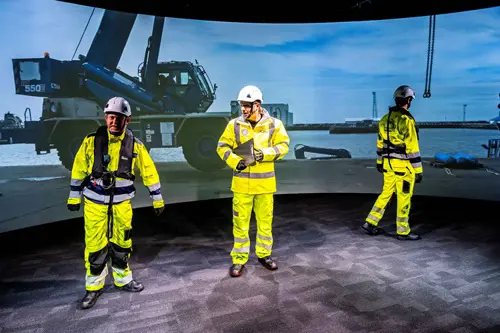
Underpinning safety training with neuroscience for long lasting impact
By SSE Active Training Team (ATT) on 30 November 2025
A behavioural safety training programme developed by Active Training Team for energy provider SSE has been carefully designed with neuroscientific principles in mind – resulting in a prestigious industry award for Best Training Initiative in 2024.
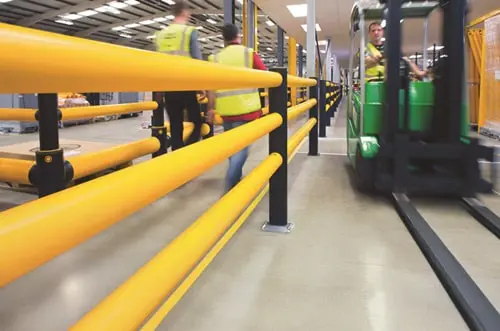
Why a painted line will never be enough
By UK Material Handling Association (UKMHA) on 20 November 2025
Businesses that operate material handling equipment like forklifts are being urged to submit accident and near miss details to a new confidential reporting portal so the industry can identify what needs to be done to improve safety standards.
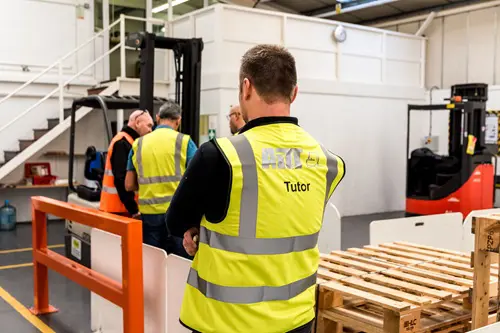
Why workplace transport training is changing in 2026 and what it means for employers
By AITT on 26 November 2025
New workplace transport training categories due in January mean it is essential to ensure operators of material handling equipment have the necessary training for the exact type of machine they use, and accredited training providers are an ideal source of advice and conversion training.


